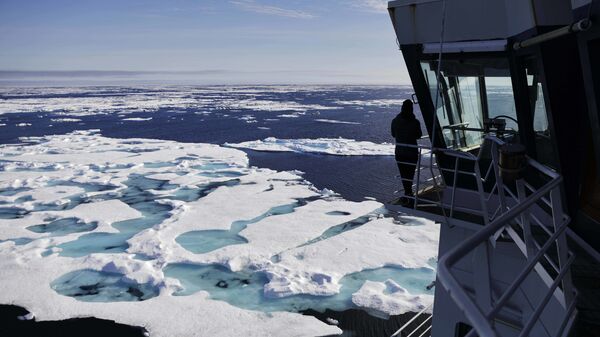The sea’s water temperature has remained above normal due to climate change and high temperatures during the summer months affecting ice formation. This is a new development in the area, as just a few decades ago, experts would not have had any doubts about the sea being cold enough to form ice.
“Even at the end of summer you couldn’t get enough heat into the ocean to raise the water temperature significantly above freezing,” Andy Mahoney, a sea ice physicist at the University of Alaska Fairbanks’ Geophysical Institute, is quoted as saying by AP. “So it didn’t take much cooling to cool the ocean down to the freezing point.”
“We’ve got a cold atmosphere. We’ve got a strong wind. You’d think we’d be forming ice, but there’s just too much heat left in the ocean,” Mahoney added.
Sea ice is a characteristic feature of the Chukchi Sea. According to AP, the ice acts as a “natural sea wall” that protects the land from erosion caused by winter storms.
According to the NASA Earth Observatory, ice crystals at the bottom of the water release salt. The salty water, which is dense, “sinks to the ocean floor” and then moves toward the equator.
“When ice freezes, the underlying water gets saltier and sinks, mixing the water column and bringing nutrients to the surface,” NASA explains.
“The sea ice layer also restricts wind and wave action near coastlines, lessening coastal erosion and protecting ice shelves. Sea ice also creates an insulating cap across the ocean surface, which reduces evaporation and heat loss to the atmosphere,” NASA explains. In addition, when ice melts, it also releases important nutrients in the water that spur phytoplankton growth.
In order for sea ice to form, the ocean temperature has to be about 28 degrees Fahrenheit (minus 1.8 degrees Celsius).
Jim Thomson, an oceanographer at the University of Washington Applied Physics Laboratory, and other scientists are already studying how less ice in the Chukchi Sea could affect coastlines.
"We know from other projects and other work that the waves are definitely on the increase in the Arctic," Thomson said.
An increase is waves translates to an increase in erosion and a higher probability of winter flooding in villages along the coastline, Thomson noted.

